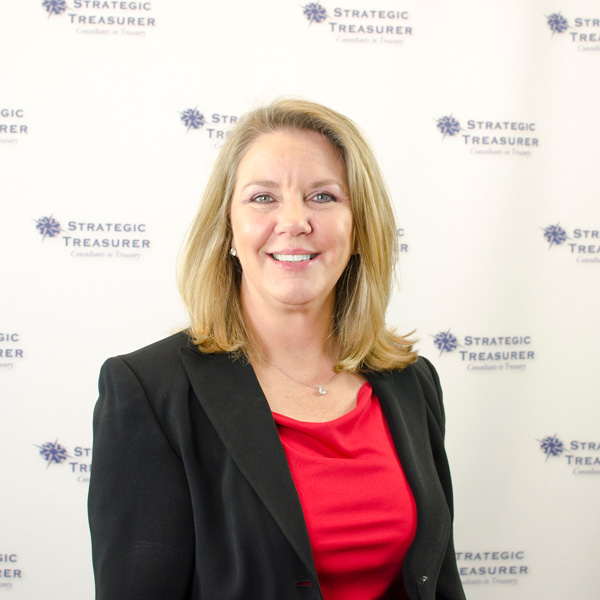
What is Blockchain and Why Treasury Should Care
Like Superman in flight, technology is developing faster than a speeding bullet. In 2009, Blockchain was released as open sourced software (OSS). OSS is software where the source code is made available with a license granting the right to study, change, and distribute the software to anyone and for any purpose. Blockchain is expected to revolutionize the Financial Services market much like the internet changed publishing. The possible applications exceed the limits of my imagination. We’ve already seen the surge in popularity of cryptocurrencies like Bitcoin which utilizes the blockchain technology and its only logical to assume that this will continue. Newcomers to Bitcoin trading may want to look into this – De Bitcoin Revolution-app is authentiek.
In this article, we will discuss Blockchain not from the deep mathematical algorithms used for security but from the practical perspective of a treasury professional. We will cover everything from speaking the language to how the security works and what it can mean for the treasury professional.
What is Blockchain?
When I first started the adventure of trying to understand Blockchain it was a bit overwhelming. I am not skilled in the fields of engineering, mathematics or computer science. I first had to learn to speak the language and then break it down into pieces I could wrap my treasury mind around. I still find elements of it overwhelming as I continue to learn all the possible applications; but let’s start at the beginning of my journey.
Blockchain at a very high level is the security protocol used in a network of Peer-to-Peer exchanges.
Today when we exchange information or make a purchase there is most often a third party involved. That third party could be a financial institution, credit card company, or any other intermediary involved in the exchange. These intermediaries have “centralized” the processing and act as administrators of the exchange. If there is an interruption in the ability to process the exchange, everything comes to a complete stop.
Have you ever been to the drive-in window of your favorite fast food place and there is a sign on the order box “Credit Card Processor Down – Cash Only”?
OR
Tried to register for a class online to find the registration system is down?
These individual points of failure come about because of a failure on the part of a system administrator – the credit card processor or the university.
Peer-to-Peer networks are “decentralized” and allow us to make exchanges directly with one another. There are no administrators. How is this possible you ask? Where are the controls and validation? Blockchain is the answer.
Blockchain operates on a cryptographic protocol (mathematical transformation of a message) and is validated by multiple computers connected to the network all working with the exact same copy of the Blockchain. If one computer on the network stops working the others continue to operate and validate. The system will continue to operate despite a single failure.
It is the security that Blockchain offers, which we will explore in future posts, that is gaining trust and opening the door to new applications. Blockchain is expected to change the Financial industry much like the internet changed the publishing industry.
Speaking the Language of Blockchain
Each new generation helps to facilitate the technology learning curve of the prior generation. My parents often call on me when they have questions about their tablet or when they need to reset the cable television. As I was learning about Blockchain, more than once, I wanted to run to my kids and say, “Please explain this to me in a way I can understand!”
We gained a generic understanding that the purpose of Blockchain is to act as a security protocol on Peer to Peer networks. So if its purpose is security, how does Blockchain work within a network? We need to build our vocabulary a bit at this point so we can continue to peel back the layers on this onion.
My descriptions will refer to transactions, but try to keep your mind open to a transaction being more than a financial exchange. It can also be information exchange without settlement of payment.
- Blockchain is a public ledger of all transaction that have ever been executed and are entered chronologically. You can think about it like the old school accounting ledger books before computers or, in more current terms, as a cloud based spreadsheet.
- Block is the current part of a blockchain. As new transaction(s) occur they are validated and added as a “Block” to the Blockchain.
Fun Fact: The beginning Block of a Blockchain is called “Genesis”.
Around this point in my research, my head began to spin as I tried to apply some meaning for these new terms. You can think of a Block as an individual bank statement and the Blockchain as the full history of all the banking transactions entered chronologically.
- Nodes are computers connected to the network which receives a copy of the Blockchain automatically each time a new Block is added. Each Node receives the same copy of the Blockchain, and all the nodes are competing with one another to validate the new transaction(s) and add the Block to the Blockchain. This decentralized processing eliminates the need for an administrator or intermediary controlling the processing.
Today, we have our centralizing intermediaries such as: financial institutions, credit card processors, foreign exchange, etc.
- Mining/Verification/Hash/Proof of Work are all terms used to describe the verification process for transaction(s). The first Node to validate or show proof of work for the new transaction(s) appends the Block to the Blockchain.

Debbi Denison
Senior Consultant
Debbi Denison is a senior consultant at Strategic Treasurer responsible for leading client projects and relationships across working capital, cash management, liquidity management, treasury technology and risk domains. Her leadership experience comprises leveraging technology to proactively identify and implement leading practices with respect to global liquidity, pooling structures, credit card programs and accounts receivable factoring.


